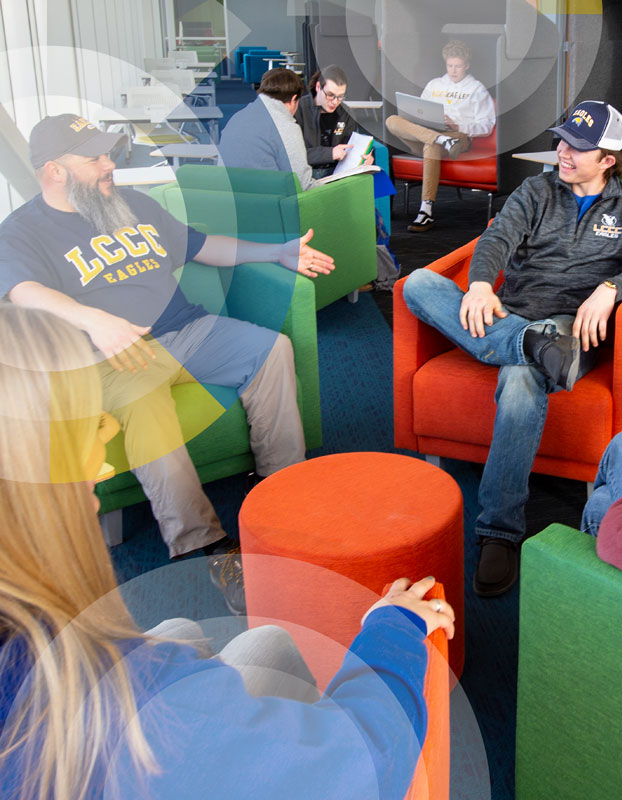
The Strategic Enrollment Management (SEM) Plan for Laramie County Community College (LCCC) provides a roadmap for enrollment planning and actions to help the College achieve its mission and its vision for our students and their success. The plan’s timeline aligns with the LCCC 2030 Strategic Plan and covers all credit-seeking student enrollments, new and continuing.
The SEM Plan is not designed to be a static document with fixed dates and timelines; it is a living document that will change and evolve as goals are achieved and tactics are accomplished. This document outlines the first steps in the SEM Plan at LCCC and will be evaluated and updated on an annual basis, at the completion of each spring term by the LCCC Standing SEM Committee which will include campus-wide representation.
The LCCC SEM Plan is a direct result of LCCC’s 2030 Strategic Plan, Goal 2. Goal 2 states that student participation, and ultimately success, will be an essential determinant of the success of LCCC, and more importantly, of our communities and state in the future. Pragmatically, the College’s resource stability will be reliant on increasing numbers of students enrolling. Strategically, these students are the necessary pipeline of talent needed within our workforce to drive economic growth and societal prosperity. The purpose of this SEM Plan is to have intentional comprehensive goals and strategies to successfully achieve Goal 2.
Through extensive research and analysis, including comprehensive environmental scanning, the SEM Plan has identified recruitment, retention, and marketing goals to help support the work of the College’s strategic plan. In addition to the SEM goals included in the strategic plan, LCCC has also developed goals specific to enrollment, directing the work and outcomes of the SEM Plan.
The overarching enrollment goal of this plan is to increase unduplicated headcount to 6,900 and full-time enrollment (FTE) to 3,650 by 2030. As a benchmark to measure success, LCCC will use the 2019 unduplicated enrollment of 5,970 and FTE of 3,173 to measure enrollment growth.
The SEM Planning team members are listed in Appendix A. The definition of terms as
well as
resources used to develop the SEM Plan are listed in Appendix B.

Externally, Laramie County Community College is located in Cheyenne, Wyoming in the southeast corner of the state. LCCC’s service area includes Laramie and Albany Counties in Wyoming. The LCCC 2030 Strategic Plan provides an overview of the context outside of LCCC, including population and demographic shifts; economic needs and priorities; funding uncertainty; an overview of the competitive marketplace including employer expectations and needs as well as student needs.
Internally, LCCC has a 271-acre campus in Cheyenne with 22 buildings, and a branch campus in Laramie. LCCC has three Residence Halls, the newest, Gold Hall, opened in spring 2021. Occupancy more than doubled from 276 beds (Foundation and Blue Halls) to 626 beds with the new addition. LCCC offers degree and certificate programs housed strategically within eight Pathways that serve as communities of interest. In-state tuition and mandatory fees for the 2022-2023 academic year are $153.75 per credit hour. LCCC participates in the Western Undergraduate Exchange program.
The market area targeted by LCCC encompasses six states in part (Kansas, Montana, Nebraska, New Mexico, South Dakota and Utah) and two states completely (Colorado and Wyoming). This market area represents a vast and varied territory in the Mountain West that necessitates organizing the area into sub-areas to aid in the strategic enrollment management efforts. As such, the market area has been organized into five zones. It is important to note that states may belong in multiple zones due to geography and/or population density and distribution within each respective state.
Service Area Zone contains the LCCC service area of Laramie and Albany counties.
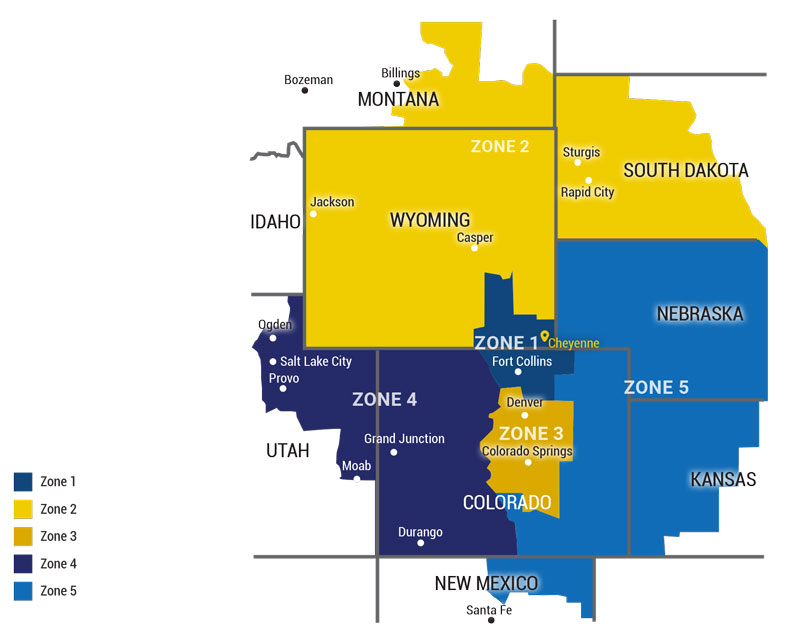
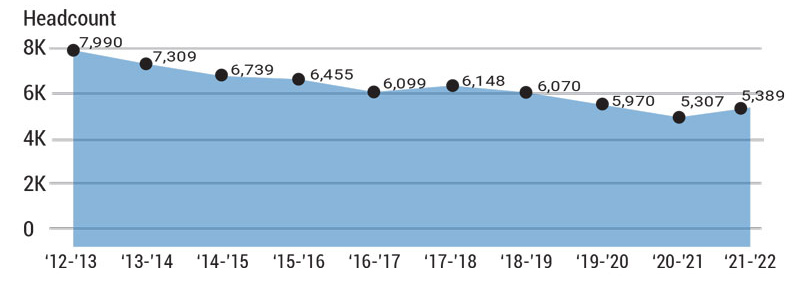
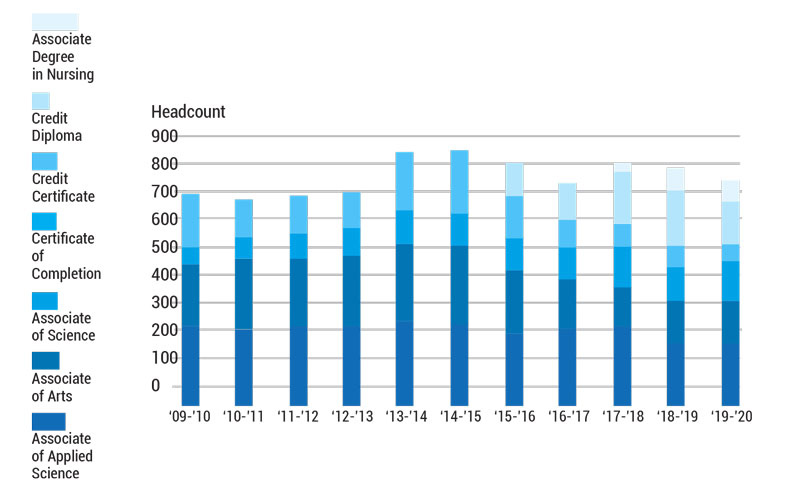

LCCC has set a target enrollment of unduplicated headcount of 6,900 and full-time enrollment (FTE) of 3,650 by 2030. To achieve this LCCC will focus on the following recruitment, retention, and marketing goals. These goals establish how LCCC will move the SEM Plan forward, building opportunities for information gathering, refining of current practices, development of new opportunities and more. Goals were developed as a result of a comprehensive analysis of the environmental scan conducted by the LCCC Performance and Planning team, as well as research of current enrollment trends and practices.
As the SEM Plan is an evolving document, LCCC will evaluate SEM goals on an annual basis to monitor progress, celebrate when goals are completed, modify goals as necessary, and identify when new goals need to be developed. This will take place at the completion of each spring term by an LCCC Standing SEM Committee which will be led by the Senior Vice President of Student Services, the Vice President of Advancement and the Vice President of Performance and Planning and will include campus-wide representation.
The goals of the SEM Plan will be driven by key strategies. These incorporate and extend existing strategic initiatives, such as Guided Pathways and Unlocking Opportunity, that will be necessary to increase our student enrollments and student success outcomes.
Stakeholders: Prospective students, LCCC Enrollment Services, LCCC Academic Affairs, LCCC Student Services, LCCC Marketing & Communications
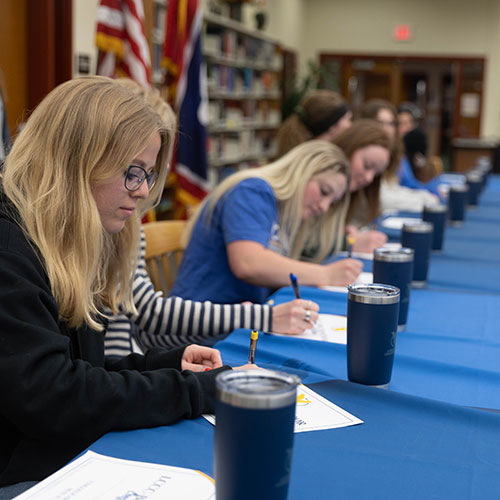
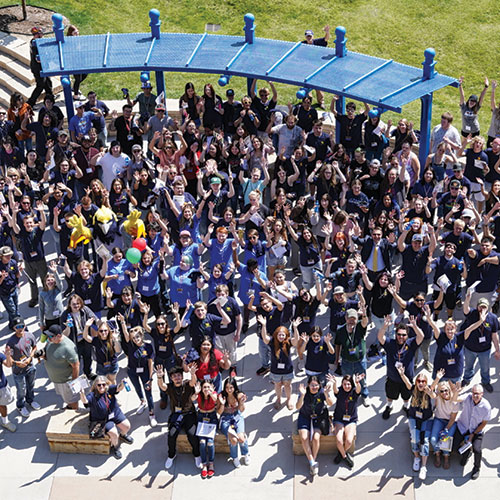

Applicant Targets by Year: Fall 2024 - 2,794 | Fall 2025 - 2,934 | Fall 2026 - 3,080 | Fall 2027 - 3,234
Tactic 1.1a:
Evaluate enrollment steps and improve the online admissions application and LCCC webpages to increase transparency and ease of access in the application process
Tactic 1.1b:
Develop targeted recruitment campaigns to prospects who have not applied, specific to their geographic zones or other known characteristics, e.g.:
Tactic 1.1c:
Develop systems and practices that incorporate the parents of traditional-age students, e.g.:
Tactic 1.1d:
Create and intensify collaboration opportunities with K-12 partners (including home-school and alternative schools) to strengthen relationships between secondary educators and counselors and LCCC faculty and staff, e.g.:
Tactic 1.1e:
Leverage data to create intentional follow-up engagement opportunities, e.g.:
Tactic 1.1f:
Increase Pathway and program-specific engagement opportunities and events including both on-campus and virtual events that offer more detailed programmatic information and interaction
Tactic 1.1g:
Identify recruitment and sales trainings that can be offered to campus and establish an implementation plan if appropriate, so that the LCCC campus community is aware of and can play a role in recruitment and conversion of prospects
Tactic 1.2a:
Design a structure to continually assess needs/barriers/challenges and develop and implement potential corrections, e.g.:
Tactic 1.2b:
Develop targeted recruitment campaigns to adult-age suspects and prospects that address their specific concerns, e.g.: highlighting financial aid opportunities for adults; highlighting flexible and/or online course offerings
Tactic 1.2c:
Create and strengthen partnerships with key community stakeholders to provide multiple sources of encouragement and support to engage adult learners, e.g.:
Tactic 1.2d:
Evaluate financial aid needs of adult learners, identify gaps, and work with key stakeholders to bridge gaps with adult-student-specific resources or opportunities
Tactic 1.2e:
Increase Pathway- and program-specific engagement opportunities and events that are targeted at adult suspects or prospects (or that incorporate marketing specific to adult suspects or prospects) including both on-campus and virtual events that offer more detailed programmatic information and interaction
*Yield Rate: The percentage of students who enroll at LCCC after being accepted. According to the National Center for Education Statistics, in fall 2021, the national yield rate for public 2-year institutions was 44.3%.
Applicant Targets by Year: Fall 2024 - 49% | Fall 2025 - 50% | Fall 2026 - 51% | Fall 2027 - 52%
Benchmarks by Year: Fall 2019 - 45.7% | Fall 2020 - 38.8% | Fall 2021 - 49.2% | Fall 2022 - 45.1% | Fall 2023 - 49%
Tactic 2.1a:
Increase high touch, personalized student service to provide onboarding and enrollment support, e.g.:
Tactic 2.1b:
Intentionally promote and market events and interaction opportunities to encourage first-generation students to engage with campus partners and feel comfortable on-campus, e.g.:
Tactic 2.1c:
Collaborate with other departments or programs on campus to provide unified support for first generation students, e.g.:
Tactic 2.2a:
Develop materials that are inclusive of and/or specific to Hispanic students and their families, e.g.:
Tactic 2.2b:
Intentionally create and promote events and interaction opportunities to encourage Hispanic students and their families to engage with campus partners and feel comfortable on-campus e.g.:
Tactic 2.2c:
Collaborate with other departments or programs on campus to provide unified support for Hispanic students and families e.g.:
Tactic 2.3a:
Analyze scheduling needs and preferences and implement student-centered improvements, with specific consideration to part-time and/or online students with needs for a flexible schedule and a clearly delineated path to completion, e.g.:
Tactic 2.3b:
Explore childcare opportunities and support for students with this need, e.g.:
Tactic 2.3c:
Implement specific and strategic
communications tailored to adult learners, e.g.:
2023 New Student Occupancy Targets: 2024 - 294 | 2025 - 308 | 2026 - 324 | 2027 - 340 | 2028 - 357 | 2029 - 375 | 2030 - 393
Total Student Occupancy Target: Fall 2023 - 422 | Fall 2024 - 455 | Fall 2025 - 493 | Fall 2026 - 530
LCCC, an environment that prioritizes, supports, and nurtures student success, including providing access to high-quality education, resources, and services that help student achieve their academic and career goals.
Tactic 3.3a:
Keep room rates flat for 2023-2024 semester
Tactic 3.3b:
Offer a 25% room rate discount to residents of LCCC service area (Laramie and Albany Counties) living in the Residence Hall
Tactic 3.3c:
Offer a 10-block meal plan to residents of LCCC Service Area (Laramie and Albany Counties) living in the Residence Hall
The goals of the SEM Plan will be driven by key strategies. These incorporate and extend existing strategic initiatives, such as Guided Pathways and Unlocking Opportunity, that will be necessary to increase our student enrollments and student success outcomes.
Stakeholders: current students, stop-out students, LCCC Student Services; LCCC Academic Affairs, LCCC Marketing & Communications
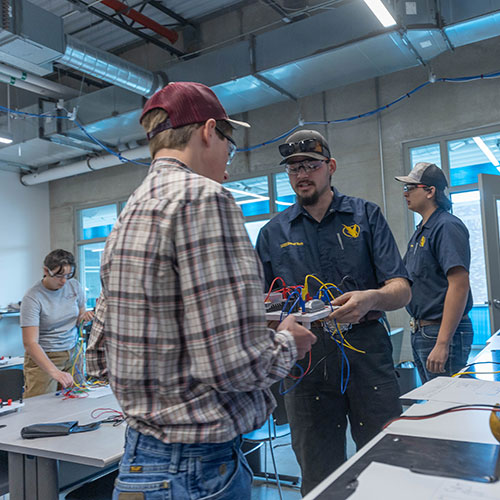
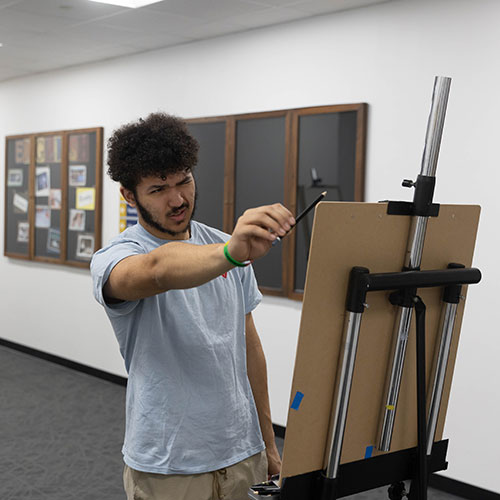
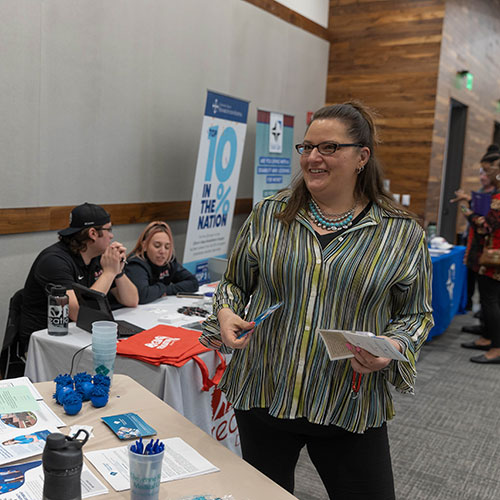
Percent of Retained Students: Fall 2027 - Target: 60%
Fall-to-Fall Retention Rates: Fall 2019 - 54.4% | Fall 2020 - 49.0% | Fall 2021 - 53.7%
Tactic 1.1a:
Design a structure to continually assess needs / barriers / challenges, develop and implement potential corrections (continuous improvement) e.g.:
Tactic 1.1b:
Implement outreach and build connections to families e.g.:
Tactic 1.1c:
Develop targeted support network for students e.g.:
Tactic 1.1d:
Develop and market/promote (internally and externally) financial support resources e.g.:
Tactic 1.2a:
Develop and market (internally and externally) financial support resources e.g.:
Tactic 1.2b:
Continue to expand OER initiatives e.g.:
Tactic 1:2c:
Explore childcare opportunities and support for students with this need e.g.:
Tactic 1.2d:
Design a structure to continually assess needs / barriers / challenges, develop and implement potential corrections (continuous improvement) e.g.:
Tactic 1.2e:
Implement outreach and build connections for support e.g.:
Tactic 1.3a:
Expose *hidden curriculum (expectations), e.g.:
*Hidden practices or hidden curriculum is defined as the hidden or non-transparent
expectations, practices, skills or curriculum in a class, Pathway, program, or administrative
processes within higher education. These processes or implied expectations may not
be obvious to first-generation students. Exposing and providing the means for students
to understand hidden curriculum may help students be successful, in class, college
and careers.
Help students 1) understand the hidden conventions and expectations of our systems, 2) develop connection to peers with similar challenges, and 3) give them agency to tackle these issues.
Develop systems to gather information on identified hidden curriculum, make employees aware of them, provide support to employees to make changes and potentially address underlying issues that shift practices, e.g.:
Tactic 1.3b:
Design a structure to continually assess needs / barriers / challenges, develop and implement potential corrections (continuous improvement) e.g.:
Tactic 1.3c:
Develop and market (internally and externally) financial support resources e.g.:
Tactic 1.3d:
Implement outreach and build connections for support e.g.:
Tactic 1.4a:
Review and implement scheduling practices that meet needs of part-time students e.g.:
Focus groups of part-time students
Surveys
Phone calls
Course capacity
Waitlist information
Summer offerings
T1.4b:
Build communities for part-time students e.g.:
T1.4c:
Design a structure to continually assess needs / barriers / challenges, develop and implement potential corrections (continuous improvement) e.g.:
T1.4d:
Develop and market (internally and externally) financial support resources e.g.:
T1.4e:
Explore childcare opportunities and support for students with this need e.g.:
*Courses which begin a sequence, are prerequisites for higher-level courses, and/or fulfill a General Education requirement in a Pathway or program.
T2.1a:
Establish the benchmark success rates for each Pathway
T2.1b:
Determine courses by Pathway that do not meet the benchmark
T2.1c:
Analyze the intersection of critical skills courses across all Pathways
T2.2a:
Intentional outreach
Students who passed and did not pass the critical skills courses
Instructors of critical skills courses
Faculty whose programs depend on critical skills courses
Other stakeholders:
Student Success Coaches
Tutors
PAC Members
T2.2b:
Evaluate, implement, and track drop and withdrawal processes that incorporate deliberate outreach and connection to resources before processing
T2.3a:
Establish an embedded tutoring program.
T2.3b:
Include Learning Commons Director and tutoring in student alert processes
T2.3c:
Train LCCC employees to help students schedule tutoring appointments
T2.3d:
Design outreach to students who are not successful in these courses to connect them
with added support or help them evaluate
Pathways.
T2.4a:
Faculty led workgroups during in-service
T2.4b:
Targeted professional development (outside LCCC)
T2.4c:
Collaborate with CET to offer opportunities and support
T2.4d:
Provide dedicated time to examine, research and implement potential redesigns, if necessary, e.g.:
Returning Student Occupancy Targets:Fall 2023 - 142 | Fall 2024 - 161 | Fall 2025 - 185 | Fall 2026 - 206
Total Student Occupancy Target: Fall 2023 - 422 | Fall 2024 - 455 | Fall 2025 - 493 | Fall 2026 - 530
Returning Student Occupancy Benchmark: 2019-2020 - 68 | 2020-2021 - 97 | 2021-2022 - 97
T3.1a:
Offer returning students a 15% discount for signing a 2023-2024 lease before the end of the spring 2023 semester
T3.1b:
Keep meal plan rates flat for 2023-2024
T3.1c:
Offer a 25% discount for students from within our service area, and an exclusive 10-meal
plan for those same students
S3.2: Promote and increase awareness for continuing to live on campus.
T3.2a:
Host Housing Renewal Fairs/events to promote continued housing opportunities for current residents
T3.2b:
Provide community and engagement opportunities, to include awareness of campus resources and Residence Hall amenities
T3.2c:
Expand internal collaboration efforts for student engagement
T3.2d:
Increase knowledge internally and externally about Residence Hall benefits, incentives, and options
T3.3a:
Design a structure to continually assess needs / barriers / challenges, develop and implement potential corrections (continuous improvement) e.g.:
T3.3b:
Expand targeted engagement opportunities to benefit residential students e.g.:
The goals of the SEM Plan will be driven by key strategies. These incorporate and extend existing strategic initiatives, such as Guided Pathways and Unlocking Opportunity, that will be necessary to increase our student enrollments and student success outcomes.
Stakeholders: LCCC Employees, LCCC Board of Trustees
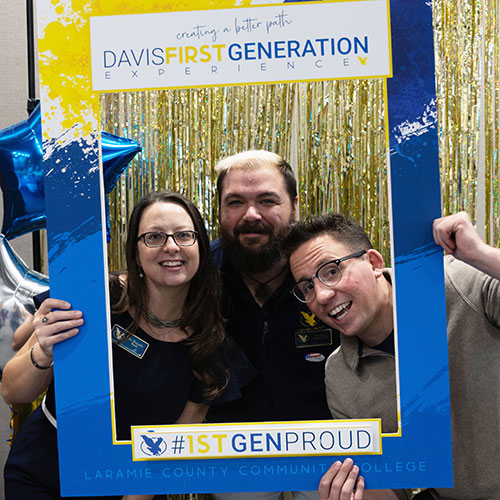


Target Number of Prospects: 2023 - 5,822 | 2024 - 6,054 | 2025 - 6,296 | 2026 - 6,547
Benchmarks: 2019 - 5,599 | 2021 - 3,417 | 2022 - 4,529
T1.1a:
In collaboration with Performance & Planning and Enrollment Services, identify geographic markets in Zone 1 for targeted marketing campaigns, resulting in prospect engagement and development, e.g.:
T1.1b:
Develop marketing campaign(s) for target populations, focused on students not currently engaged with LCCC, e.g.:
T1.1c:
Develop a marketing campaign for school counselors and teachers focused on awareness of LCCC and program opportunities, e.g.:
T1.1d:
Develop an informational marketing campaign for parents/guardians of the target population, e.g.:
T1.1e:
Develop marketing campaigns to support face-to-face engagement with target population, to increase prospect engagement e.g.:
T1.1f:
Develop a more efficient online information gathering process, to collect student contact information, entry term and program of interest, e.g.:
T1.2a:
Develop marketing campaign(s) for target populations, resulting in prospect engagement and development, e.g.:
T1.2b:
Develop marketing campaigns to support face-to-face interactions with target population, e.g.:
T1.2c:
Develop a more efficient online information gathering process, e.g.:
T1.2d:
In collaboration with Academic Affairs and other key stakeholders, identify online and flexible program offerings at LCCC to use in marketing campaigns to target populations.
T1.2e:
Collaborate with and inform community partners of opportunities available at LCCC, creating greater awareness and engagement from target population.
T1.2f:
Interweave financial support opportunities throughout campaigns/materials.
T1.3a:
Develop marketing campaign(s) for target populations, resulting in prospect development and engagement, e.g.:
Implement a retention marketing campaign for: Full-time students | Part-time students | Dual enrolled students
T2.1a:
Create a marketing campaign designed to increase retention rates.
T2.1b:
Collaborate with Enrollment Services, Pathway Coordinators, faculty and other key stakeholders to provide messaging, e.g.:
Website Visits: 2022 (start of path landing page) 107,410
T3.1a:
Establish a baseline number of visits to the LCCC website using data from the Fall semester 2023.
T3.1b:
Create designated landing page(s) for target populations that provide information that is relevant to the audience and encourages engagement with LCCC.
T3.1c:
Develop marketing campaign(s) for target populations, focused on generating engagement with LCCC, e.g.:
T3.1d:
Develop a campaign for school counselors and teachers, that is focused on awareness of LCCC and information sharing, e.g.:
T3.1e:
Develop marketing campaigns for parents/guardians of target populations to create awareness of LCCC in the target market.